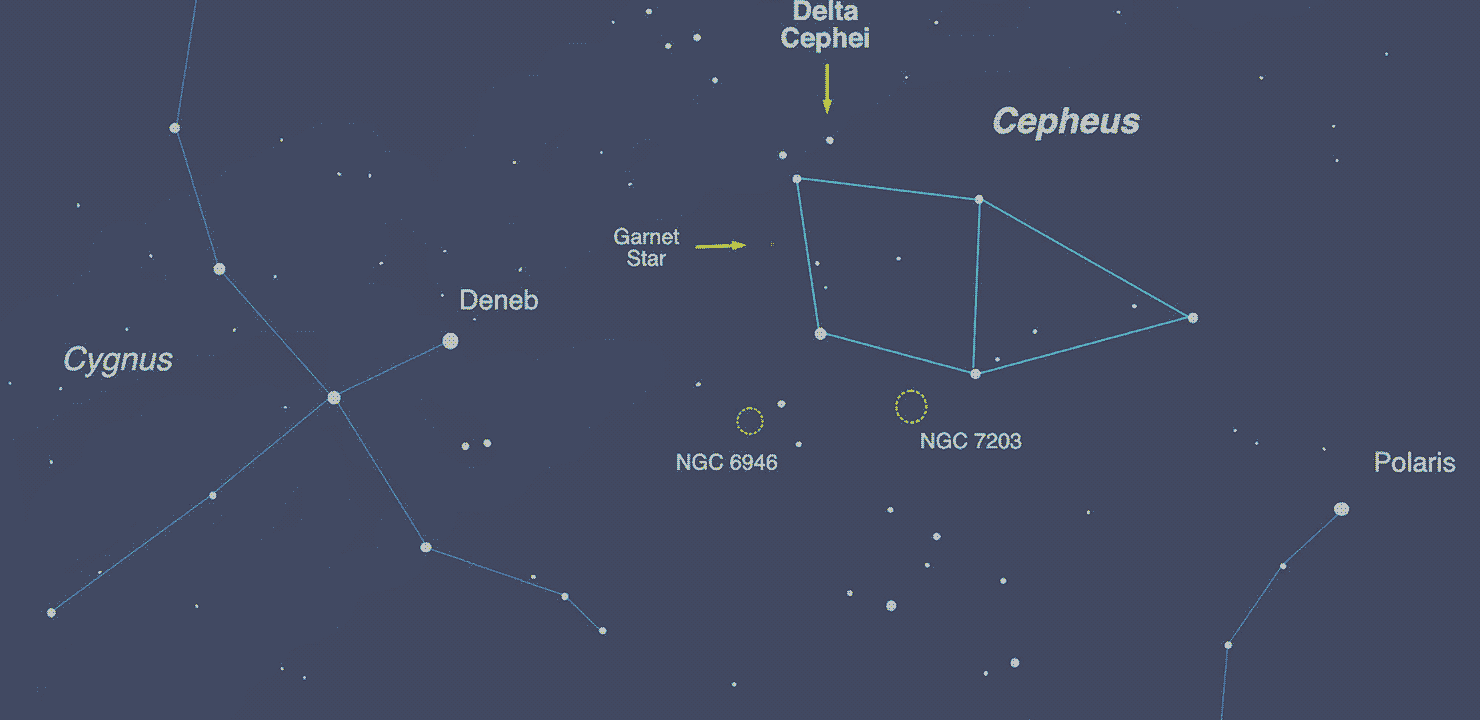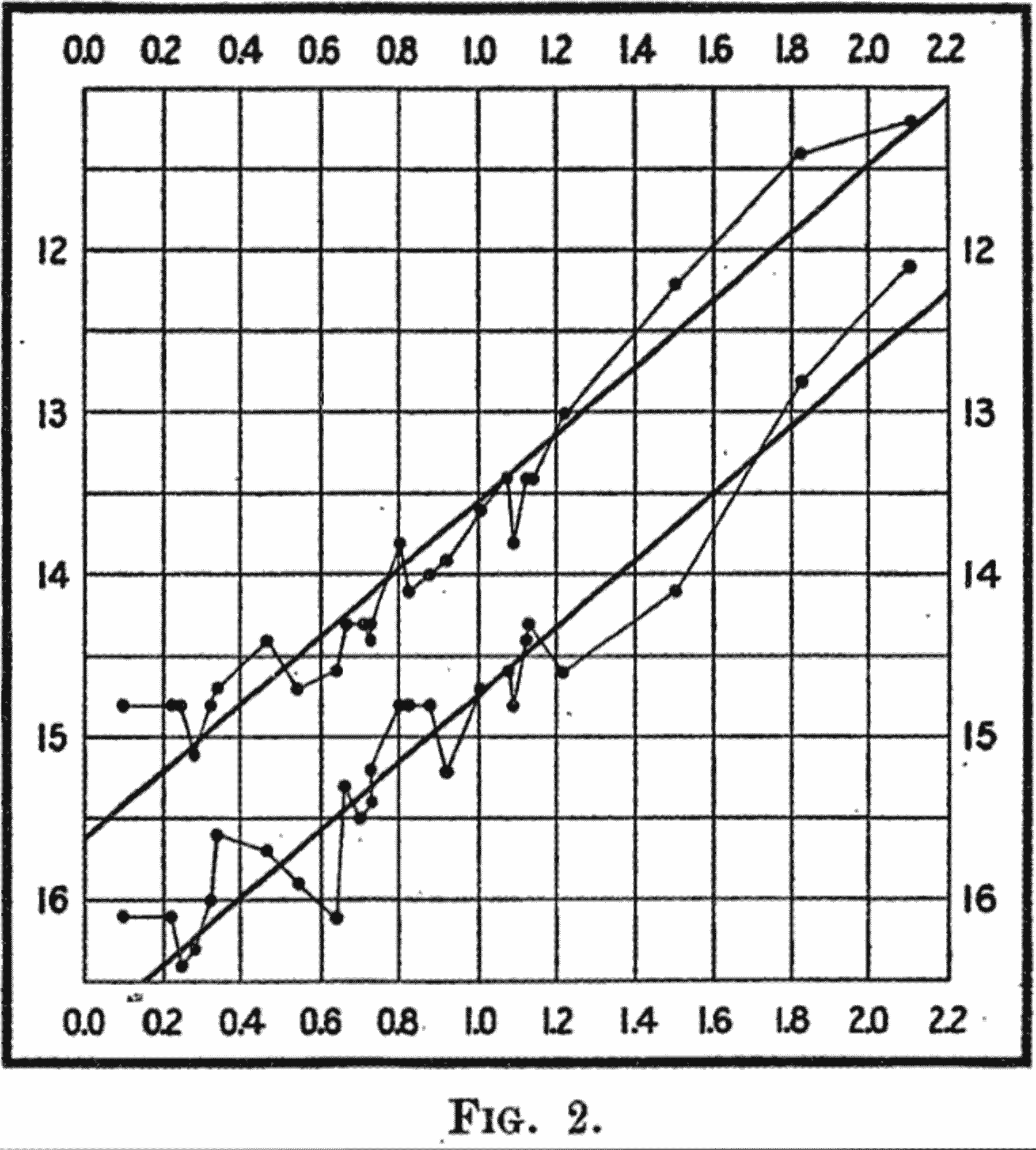
Cepheus: A House Fit for a King
November 2022 :
Sometimes constellations look like their namesake, and sometimes these starry patterns look like something else entirely. That’s the case for many stargazers upon identifying the constellation of Cepheus for the first time. These stars represent Cepheus, the King of Ethiopia, sitting on his throne. However, many present-day observers see the outline of a simple house, complete with peaked roof, instead – quite a difference! Astronomers have another association with this northern constellation; inside its borders lies the namesake of one of the most important types of stars in modern astronomy: Delta Cephei, the original Cepheid Variable.
Cepheus is a circumpolar constellation for most observers located in mid-northern latitudes and above, meaning it does not set, or dip below the horizon. This means Cepheus is visible all night long and can be observed to swing around the northern celestial pole, anchored by Polaris, the current North Star. Other circumpolar constellations include Cassiopeia, Ursa Major, Ursa Minor, Draco, and Camelopardalis. Its all-night position for many stargazers brings with it some interesting objects to observe. Among them: the “Garnet Star” Mu Cephei, a supergiant star with an especially deep red hue; several binary stars; several nebulae, including the notable reflection nebula NGC 7023; and the “Fireworks Galaxy” NGC 6946, known for a surprising amount of supernovae.
Perhaps the most famous, and certainly the most notable object in Cepheus, is the star Delta Cephei. Its variable nature was first discovered by John Goodricke, whose observations of the star began in October 1784. Slightly more than a century later, Henrietta Leavitt studied the variable stars found in the Magellanic Clouds in 1908 and discovered that the type of variable stars represented by Delta Cephei possessed very consistent relationships between their luminosity (total amount of light emitted), and their pulsation period (generally, the length of time in which the star goes through a cycle of where it dims and then brightens). Once the period for a Cepheid Variable (or Cepheid) is known, its luminosity can be calculated by using the scale originally developed by Henrietta Leavitt, now called “Leavitt’s Law.”. So, if a star is found to be a Cepheid, its actual brightness can be calculated versus its observed brightness. From that difference, the Cepheid’s distance can then be estimated with a great deal of precision. This revolutionary discovery unlocked a key to measuring vast distances across the cosmos, and in 1924 observations of Cepheids by Edwin Hubble in what was then called the Andromeda Nebula proved that this “nebula” was actually another galaxy outside of our own Milky Way! You may now know this object as the “Andromeda Galaxy” or M31. Further observations of Cepheids in other galaxies gave rise to another astounding discovery: that our universe is not static, but expanding!

This historical diagram from Henrietta Leavitt’s revolutionary publication shows the luminosity of a selection of Cepheid Variables on the vertical axis, and the log of their periods on the horizontal axis. The line drawn through these points shows how tight that relationship is between all the stars in the series. From Henrietta Leavitt and Edward Pickering’s 1912 paper, “Periods of 25 Variable Stars in the Small Magellanic Cloud,” a copy of which can be found at: https://ui.adsabs.harvard.edu/abs/1912HarCi.173....1L/abstract
Because of their importance as a “standard candle” in measuring cosmic distances, astronomers continue to study the nature of Cepheids. Their studies revealed that there are two distinct types of Cepheids: Classical and Type II. Delta Cephei is the second closest Cepheid to Earth after Polaris, and was even studied in detail by Edwin Hubble’s namesake telescope, NASA’s Hubble Space Telescope, in 2008. These studies, along with others performed by the ESA’s Hipparcos mission and other observatories, help to further refine the accuracy of distance measurements derived from observations of Cepheids. What will further observations of Delta Cephei and other Cepheids reveal about our universe? Follow NASA’s latest observations of stars and galaxies across our universe at nasa.gov.
The stars of Cepheus are visible all year round for many in the Northern Hemisphere, but fall months offer some of the best views of this circumpolar constellation to warmly-dressed observers. Just look northwards! Image created with assistance from Stellarium: stellarium.org.



